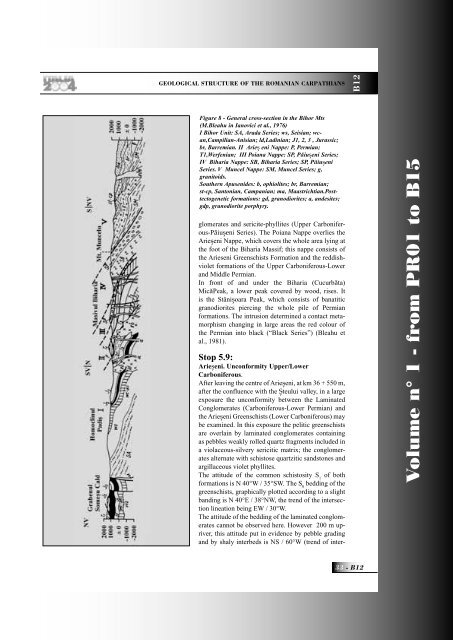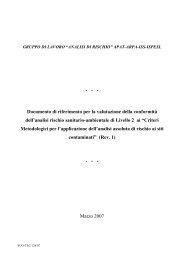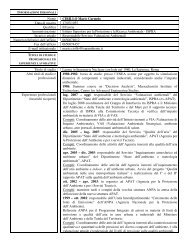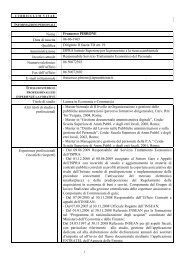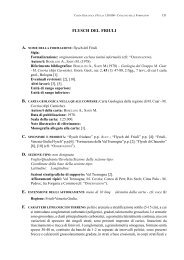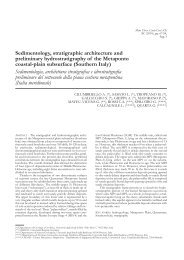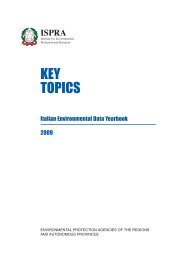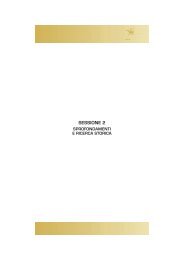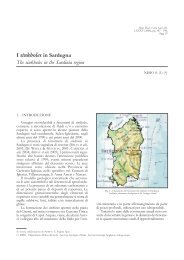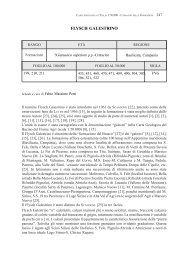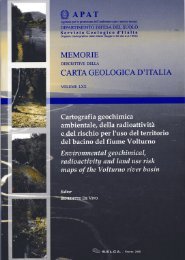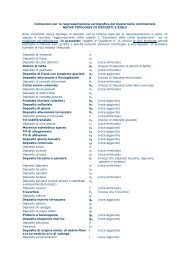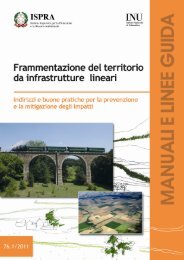Guidebook - Ispra
Guidebook - Ispra
Guidebook - Ispra
Create successful ePaper yourself
Turn your PDF publications into a flip-book with our unique Google optimized e-Paper software.
GEOLOGICAL STRUCTURE OF THE ROMANIAN CARPATHIANS<br />
Figure 8 - General cross-section in the Bihor Mts<br />
(M.Bleahu in Ianovici et al., 1976)<br />
I Bihor Unit: SA, Arada Series; ws, Seisian; wcan,Campilian-Anisian;<br />
ld,Ladinian; J1, 2, 3 , Jurassic;<br />
br, Barremian. II Arieș eni Nappe: P, Permian;<br />
T1,Werfenian; III Poiana Nappe: SP, Păiușeni Series;<br />
IV Biharia Nappe: SB, Biharia Series; SP, Păiușeni<br />
Series. V Muncel Nappe: SM, Muncel Series; g,<br />
granitoids.<br />
Southern Apusenides: b, ophiolites; br, Barremian;<br />
st-cp, Santonian, Campanian; ma, Maastrichtian.Posttectogenetic<br />
formations: gd, granodiorites; a, andesites;<br />
gdp, granodiorite porphyry.<br />
glomerates and sericite-phyllites (Upper Carboniferous-Păiușeni<br />
Series). The Poiana Nappe overlies the<br />
Arieșeni Nappe, which covers the whole area lying at<br />
the foot of the Biharia Massif; this nappe consists of<br />
the Arieseni Greenschists Formation and the reddishviolet<br />
formations of the Upper Carboniferous-Lower<br />
and Middle Permian.<br />
In front of and under the Biharia (Cucurbăta)<br />
MicăPeak, a lower peak covered by wood, rises. It<br />
is the Stânișoara Peak, which consists of banatitic<br />
granodiorites piercing the whole pile of Permian<br />
formations. The intrusion determined a contact metamorphism<br />
changing in large areas the red colour of<br />
the Permian into black (“Black Series”) (Bleahu et<br />
al., 1981).<br />
Stop 5.9:<br />
Arieșeni. Unconformity Upper/Lower<br />
Carboniferous.<br />
After leaving the centre of Arieșeni, at km 36 + 550 m,<br />
after the confluence with the Șteului valley, in a large<br />
exposure the unconformity between the Laminated<br />
Conglomerates (Carboniferous-Lower Permian) and<br />
the Arieșeni Greenschists (Lower Carboniferous) may<br />
be examined. In this exposure the pelitic greenschists<br />
are overlain by laminated conglomerates containing<br />
as pebbles weakly rolled quartz fragments included in<br />
a violaceous-silvery sericitic matrix; the conglomerates<br />
alternate with schistose quartzitic sandstones and<br />
argillaceous violet phyllites.<br />
The attitude of the common schistosity S 1 of both<br />
formations is N 40°W / 35°SW. The S 0 bedding of the<br />
greenschists, graphically plotted according to a slight<br />
banding is N 40°E / 38°NW, the trend of the intersection<br />
lineation being EW / 30°W.<br />
The attitude of the bedding of the laminated conglomerates<br />
cannot be observed here. However 200 m upriver,<br />
this attitude put in evidence by pebble grading<br />
and by shaly interbeds is NS / 60°W (trend of inter-<br />
B12<br />
33 - B12<br />
Volume n° 1 - from PR01 to B15


